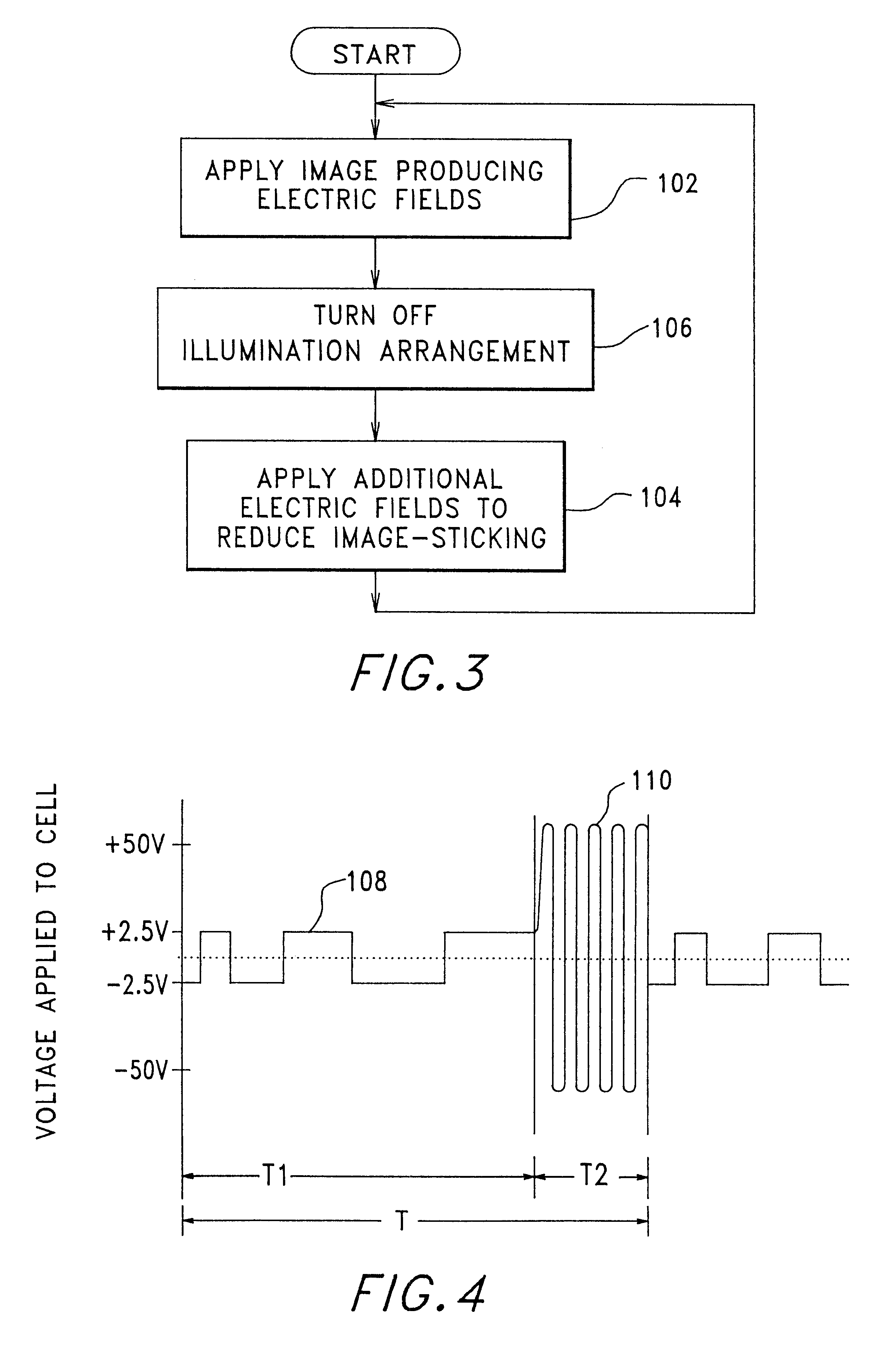DC-balanced and non-DC-balanced drive schemes for liquid crystal devices
- Summary
- Abstract
- Description
- Claims
- Application Information
AI Technical Summary
Benefits of technology
Problems solved by technology
Method used
Image
Examples
Embodiment Construction
An invention is described herein for providing a method of operating a liquid crystal cell during a given period of time without requiring DC-balancing of the cell. In the following description, numerous specific details are set forth in order to provide a thorough understanding of the present invention. However, it will be obvious to one skilled in the art that the present invention may be embodied in a wide variety of specific configurations. Also, well known liquid crystal cell manufacturing processes and known methods of controlling liquid crystal cells using various electrical circuits will not be described in detail herein so as not to unnecessarily obscure the present invention.
The method of the present invention may be used with a wide variety of types of liquid crystal cells that may be used in a wide variety of specific applications. However, for purposes of an example, the method of the present invention will be described with reference to a ferroelectric liquid crystal d...
PUM
 Login to View More
Login to View More Abstract
Description
Claims
Application Information
 Login to View More
Login to View More - R&D
- Intellectual Property
- Life Sciences
- Materials
- Tech Scout
- Unparalleled Data Quality
- Higher Quality Content
- 60% Fewer Hallucinations
Browse by: Latest US Patents, China's latest patents, Technical Efficacy Thesaurus, Application Domain, Technology Topic, Popular Technical Reports.
© 2025 PatSnap. All rights reserved.Legal|Privacy policy|Modern Slavery Act Transparency Statement|Sitemap|About US| Contact US: help@patsnap.com



